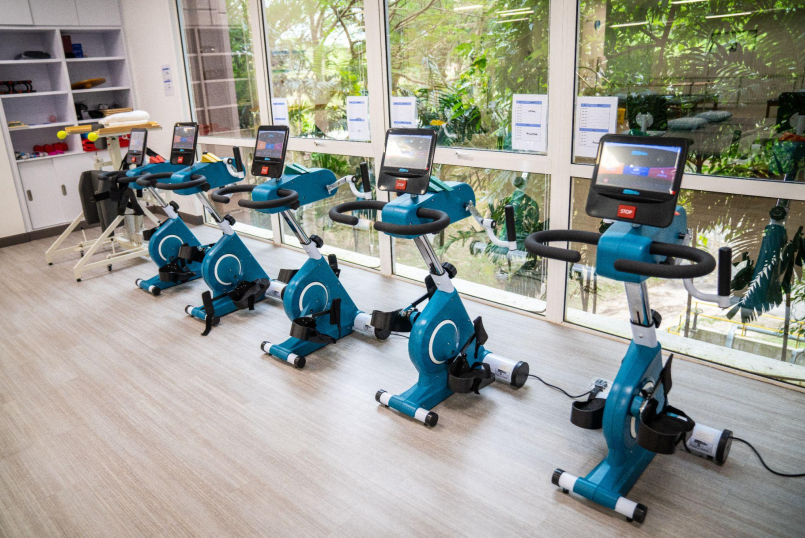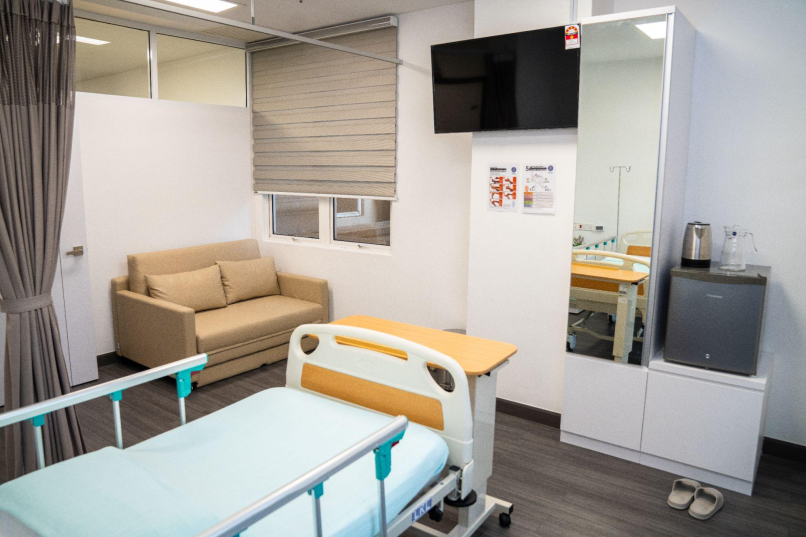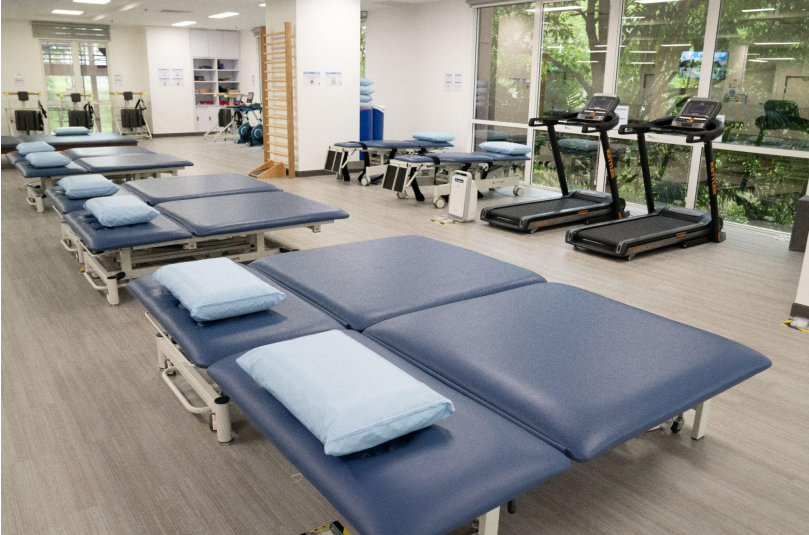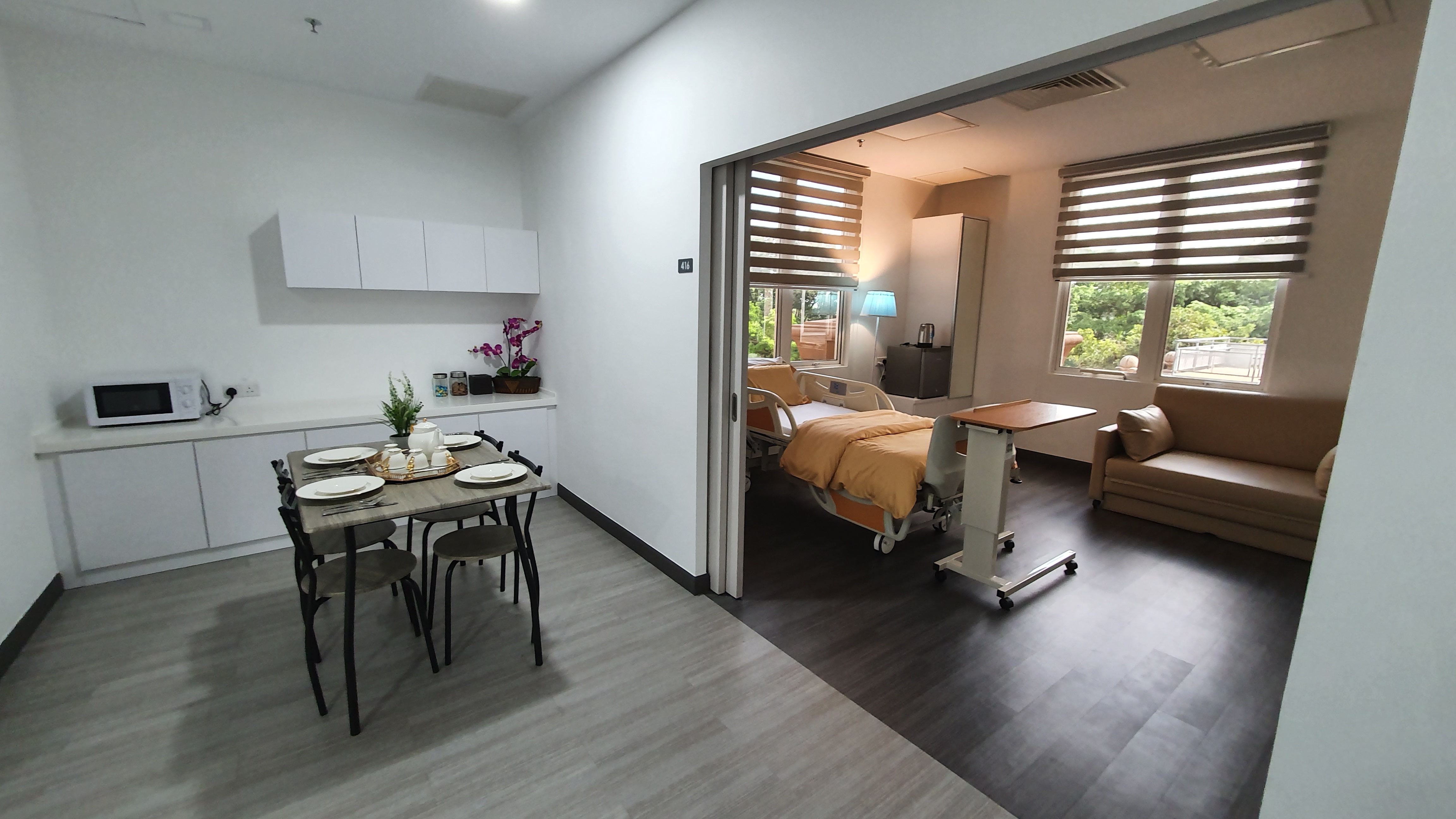How would you describe Long COVID? What are the typical symptoms?
Long COVID is a term coined to define both ongoing symptoms at five to twelve weeks post COVID-19 infection and Post COVID-19 Syndrome from which an individual suffers symptoms beyond 12 weeks after an infection.
The typical symptoms results from multisystem-multiorgan involvement. These include respiratory symptoms such as shortness of breath, cough and pain with breathing. Approximately 5% of cases can be attributed to interstitial lung disease and lung fibrosis as a result of the infection. Cardiovascular symptoms are often seen too, which may be a result of a variety of factors which include inflammation of the heart muscles, prolonged ICU care resulting in deconditioning and general cardiac and respiratory weakness. Neurological and musculoskeletal symptoms as a result of inflammation of nerves and muscles results in loss of smell, taste, sleep disturbances and weakness of muscles for breathing, swallowing, talking and walking. Reports on “Brain Fog” is also seen with forgetfulness, thinking becomes slow, inability to concentrate and individuals do not feel that they are as “sharp” as before the infection. Changes in psychiatric and general mental health are also commonly reported. Depression, anxiety with mood changes are seen post-COVID-19 infection. Insomnia and difficulty with sleeping is also a common complaint.
Blood disorders such as clotting problems have led to many patients developing blood clots in the lungs and limbs. These medical complication leads to further secondary impairment.
Skin rash may also appear and persist for many months. Fatigability and inability to return to their normal activities of daily living will be the main non-specific complaint.

How does rehabilitation benefit those suffering from Long COVID?
Treatment spectrum to address the acute infection of the coronavirus can be seen between conservative treatment (asymptomatic) to those requiring ICU care and mechanical ventilation. Once the infection has resolved, the virus is no longer in the human body. Nonetheless, the detrimental effect of the viral infection persists, seen as symptoms of Long COVID.
As a result of post-COVID-19 infection, we commonly see patients presenting with the above-mentioned symptoms involving multiple systems. Rehabilitation is a specialty of medicine that focuses on function. Complex multisystem impairment can best be addressed by rehabilitation.
Post COVID rehabilitation comprises of a multidisciplinary team led by a Rehabilitation Physician. The team is made up of physiotherapists, occupational therapists, speech and language therapists, psychologists, nurses, dieticians and pharmacists. Every member plays a role in looking at the multisystem impairment; with patient-centred goals.
Rehabilitation provides a comprehensive and holistic approach in managing Long COVID. It helps by addressing all the functional impairments seen, with the bio-psycho-social-physical-technological approach. As we see growth to the understanding of post-COVID infection, studies are now emerging on the positive impact of rehabilitation on patient’s physical and mental health.

Do patients recovering from critical cases of COVID (e.g. those requiring ICU) also require rehabilitation?
Definitely YES to this question. The spectrum of rehabilitation begins in ICU and extends to community-based / self-management rehabilitation.
Those with Category 4 and Category 5 COVID infection will suffer a higher degree of impairment. The Category 4 patients are symptomatic with pneumonia and require supplemental oxygen, while those with Category 5 infection will be critically ill with multi-organ impairment. Most of these patients, if not all will require in-patient intensive rehabilitation following discharge from acute care. Most will desaturate with minimum physical activity and require supplemental oxygen. Their blood oxygen level will drop even with minimal mobility such as movement in bed and sitting up from a lying position. Simple activity of daily living such as eating, talking and breathing will be laborious. They would have deconditioned following long ICU or hospital stay resulting in general muscle wasting and weakness. Multiorgan impairment as a result of infection requires further monitoring and surveillance during rehabilitation as this has an impact on overall function and recovery.

What is Daehan offering in terms of post-COVID rehabilitation?
Daehan Rehabilitation Hospital Putrajaya is a stand-alone rehabilitation hospital, with a focus on medical rehabilitation as our core service. It is a unique specialised hospital with experienced Rehabilitation Physicians and 24-7 medical cover. Daehan has a complete multidisciplinary team to address the complex multisystem impairment seen in post-COVID survivors. The activities in Daehan revolve around goal-oriented functional outcome to improve the physical and mental wellbeing of Post COVID survivors suffering from Long COVID symptoms.
As Daehan uses the bio-psycho-social-physical-technological approach with the practices of well-known South Korean rehabilitation legacy, our South Korean trained therapists are skilled to address the Long COVID symptoms.
We have physical therapists to conduct cardiopulmonary and musculoskeletal rehabilitation, with structured and varied intensity rehabilitation based on patient’s capacity and capability. The physiotherapists may start therapy at the bedside, with stretching, strengthening and breathing exercises. As endurance increases, the patients will be further challenged towards higher intensity activities.
Our Occupational therapists will focus on activities of daily living (ADL) such as personal ADL of dressing, grooming, toileting and hand function. It is not uncommon that patients coming out of acute care will not have left their beds in the many weeks of hospitalisation. Our occupational therapists will assist in training the patients to regain their lost skills and independence. They will also address cognitive impairment seen in “Brain Fog”, anxiety and depression with neurostimulation activities and relaxation therapy incorporated in the programme. For those that were working, return-to-work will be incorporated into the rehabilitation programme.
The speech and language therapists (SLT) will look into swallowing, speech and vocalisation. Many patients discharged from acute care that come to Daehan are on tube feeding with a Ryle’s tube via their nose and dependent on tracheostomy for lung secretion management and oxygenation. Through our comprehensive programme, many are able to be weaned off tube feeding. Daehan has a complete Dysphagia (Swallowing) programme to investigate swallowing disorders via clinical evaluation and instrumental investigation. Both a Video Fluroscopy Swallow Study (VFSS) and Fibreoptic Endoscopic Evaluation of Swallowing (FEES) services are available at Daehan. Being able to eat again and taste food is a crucial part of recovery and quality of life.
Breathing and phonation are also an integral part of speech therapy. As the speech therapists work closely with the physiotherapists on pulmonary rehabilitation, re-learning how to control and strengthen breathing will influence voice quality.
Dietary advice and nursing care is also an integral component to complete the overall recovery journey of patients with Long COVID symptoms. What is trained in the gym and therapy area are brought to practice in the ward. What patients need to heal from a dietary perspective is also important. Dieticians work closely with the SLT, nurses and hospital food service provider to deliver optimal dietary components and consistency to correlate with their clinical needs.
Long COVID patients also require close medical monitoring of their medical condition. As we know, those with multiple co-morbidity tend to fair less favourably after COVID-19 infection. It is not uncommon that these patients also have diabetes, hypertension, prone to infection and multi-organ impairment that needs continuous monitoring. Our in-house rehabilitation physicians and 24-hour medical coverage maintain optimal medical conditions to promote recovery and rehabilitation outcomes.
Daehan is also equipped with technology to augment rehabilitation. Our hydrotherapy treadmill, bodyweight suspended gait robotics machine, gravity eliminated treadmill exercise machine, upper limb assisted robotic devices with virtual reality, computerised cognitive assessment and therapy programme, electrical stimulation devices, physical modalities are a few of the many technology devices we use here in Daehan as part of the day to day rehabilitation programme.
The programme for Long COVID rehabilitation is also formulated based on individual needs. It is conducted through an organised timetable of therapeutic activities, to provide structure, discipline, consistency and intensity: all integral components of a successful rehabilitation. The one-on-one therapy helps intensify the individual programme, whereas the group therapy helps promote inclusivity and psychosocial well-being. Communication between therapists, nurses, medical officers and rehabilitation physicians are clear, and we take pride in the quality of service delivered here in Daehan.
As patients become less symptomatic and are fit for discharge, the rehabilitation can continue as outpatient basis, until they reach their maximal function.

Are there any additional points/insights which you’d like the public to be aware of?
Long COVID can affect anyone after a COVID-19 infection. Even those with mild symptoms during the acute infection can suffer from Long COVID. A study in the UK quoted 1 in 10 respondents testing positive COVID-19 may exhibit symptoms for a period of 12 weeks or longer. Another study found that 30% of COVID-19 patients surveyed still had symptoms after nine months. Countries with higher incidence of cases also saw more Long COVID reported symptoms: 87.4% in Italy had persistent symptoms after 2 months and 76% in China had symptoms persisting more than 6 months.
In a local study done by the Ministry of Health Malaysia, about 15% will have the severe form of infection (Category 4 and Category 5) from which 66% of these patients suffered Post COVID Syndrome (persistent symptoms beyond 12 weeks). The 5 most common symptoms included fatigue, difficulty in breathing during activities, difficulty sleeping, persistent cough and anxiety.
As Malaysia approaches a tally of 2 million COVID-19 infected individuals, we must prepare for the long haul of Long COVID symptoms. It is predicted and becoming evident that Long COVID will be of public health concern. If you do have Long COVID symptoms, regardless of the chronicity, rehabilitation may help. Please see your local Rehabilitation Physician and make an inquiry about Long COVID Rehabilitation programme.
Vaccination against COVID-19 has also been shown to protect an individual from severe illness from the virus. If you or any of your family members, friends and colleagues have not yet been vaccinated and are aged within the vaccination targeted population, please register in MySejahtera or seek assistance at your nearest Health Clinic.

Assoc. Prof. Dr. Fazah Akhtar Hanapiah
Consultant Rehabilitation Physician
President of Daehan Rehabilitation Hospital Putrajaya
Vice President of the Malaysian Association of Rehabilitation Physicians (MARP)
MBBCh BAO LRCP&SI (Ireland); MRehabMed (Malaya); CMIA (NIOSH); AMM
This content is provided by Daehan Rehabilitation Hospital
Interested in having your announcements on Malaysiakini? Contact the announcements team at [email protected] or whatsapp on +60 17-323 0707 for urgent matters.

